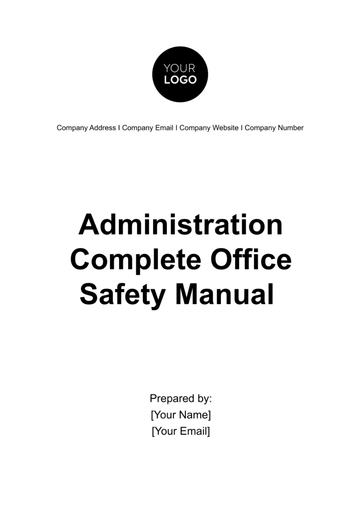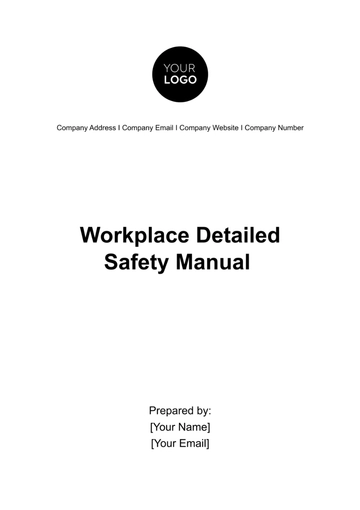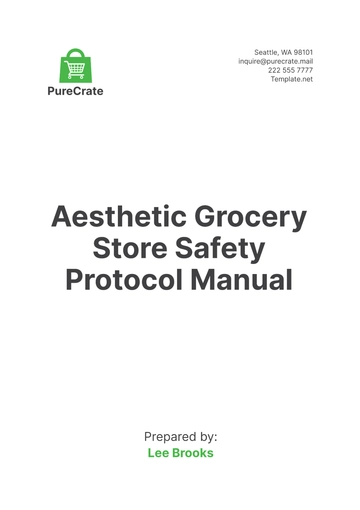Free Office Safety Manual

Prepared by: [YOUR COMPANY NAME]
This Office Safety Manual provides guidelines and procedures to ensure a safe and secure workplace environment. It is essential for all employees to familiarize themselves with these safety measures and adhere to them diligently. Safety in the workplace is a shared responsibility.
General Safety Guidelines
Every employee must contribute to maintaining a safe and hazard-free environment. Below are fundamental safety guidelines applicable to all office areas:
Keep walkways and emergency exits clear at all times.
Do not block fire extinguishers, electrical panels, or emergency equipment.
Report any unsafe conditions or equipment immediately to the safety manager.
Follow ergonomic best practices when setting up and using workstations.
Emergency Preparedness
Preparedness for emergencies can significantly reduce the risk of harm. The following procedures should be followed in the event of an emergency:
Fire Safety
Familiarize yourself with the location of fire extinguishers and alarms.
In the event of a fire, activate the nearest alarm and proceed to the closest exit.
Do not use elevators during an evacuation.
Gather at the designated assembly point for a headcount.
Medical Emergencies
Call emergency services immediately, providing clear information about the location and nature of the incident.
Do not attempt to move an injured person unless absolutely necessary.
Administer first aid if trained and necessary.
Office Equipment Safety
Proper handling and use of office equipment are crucial to preventing accidents. Employees should observe the following equipment safety measures:
Electrical Safety
Ensure all electrical cords are intact and grounded properly.
Do not overload electrical outlets.
Unplug equipment before cleaning or servicing.
Office Machinery
Only trained personnel should operate complex machinery, such as large printers.
Report any malfunctioning equipment immediately.
Personal Safety & Ergonomics
Maintaining personal safety and ergonomic practices can prevent accidents and health issues, improving overall workplace efficiency and comfort.
Ergonomic Workstations
Adjust your chair and desk to maintain a natural posture.
Position your computer monitor at eye level to reduce neck strain.
Use a chair with proper lumbar support.
Personal Protective Equipment (PPE)
When necessary, personal protective equipment should be worn to protect against specific hazards. Examples include:
Safety glasses or goggles when dealing with chemicals or dusty environments.
Ear protection when working in a high-noise environment.
Accident Reporting and Investigation
All accidents, no matter how minor, should be reported promptly to initiate a timely response and investigation. Use the following procedure:
Report the accident to your supervisor or safety officer immediately.
Fill out an accident report form with detailed information about the incident.
The safety officer will conduct a thorough investigation to determine the cause and prevent future occurrences.
By following the guidelines outlined in this Office Safety Manual, we can work together to create a safer and more productive office environment for everyone.
- 100% Customizable, free editor
- Access 1 Million+ Templates, photo’s & graphics
- Download or share as a template
- Click and replace photos, graphics, text, backgrounds
- Resize, crop, AI write & more
- Access advanced editor
Ensure workplace safety with Template.net's Office Safety Manual Template. This fully editable and customizable resource simplifies compliance and organization. Designed for convenience, it’s compatible with the AI Editable Tool, letting you personalize effortlessly. Streamline safety protocols, save time, and create a safer environment. Perfect for businesses prioritizing clarity and adaptability in safety documentation.





























